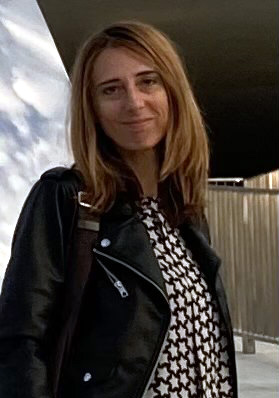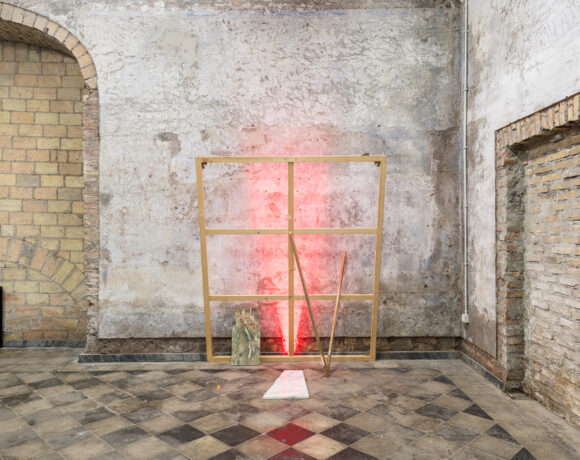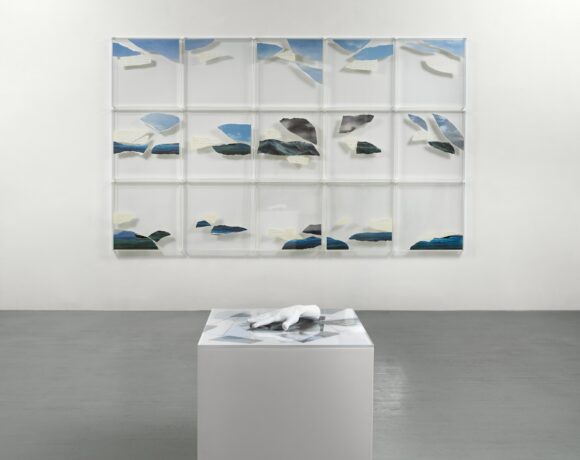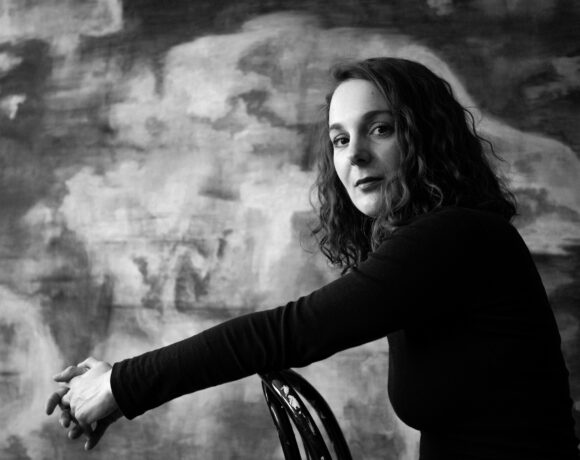Reflecting on the concept of ruin as a form that lends itself to a plurality of glances that are sometimes divergent, never immobile, as indicated by the etymology of the word (ruĕre, overturn, precipitate) which indicates its “becoming” nature, characterized by its being in decay but also an “open work”, ready to welcome new meanings, the Greek artist Andreas Angelidakis (Athens, 1968) built his new project at Palazzo Bentivoglio in Bologna. A building whose history is intertwined with that of the noble residence of the family from Bologna that was razed to the ground during the well-known popular uprising in the spring of 1507, as evidenced by the adjacent hill in via Del Guasto, still full of rubble from what was once the Domus Magna, in an area where today a public garden is developed.
Angelidakis (architect, eclectic artist, blogger, curator), uses the artistic medium to conduct an investigation on the space that surrounds us, to recode it and to examine, even at a historical and social level, to what extent new technologies have the power to influence the architecture and our lifestyle.
Evident in him are the influence of that architectural phenomenon that arose in the 1960s and known as “Radical Architecture”, some traits derived from the Memphis group from Milan, the fascination for Giovanni Battista Piranesi and his imaginative architectures that reinterpreted, deconstructing it, the history (and its ruins) always cited and revisited with an attitude, in a certain sense, precursor of the Postmodern, to create a new category of space and beauty.
The work that gives the exhibition its title (selected from the nine curatorial Main projects of Art City 2022 conceived in relation to the places that host them), in dialogue with other heterogeneous works related to it, is the large installation POST-RUIN Bentivoglio (2020). This “constructive ruin” that runs through the sixteenth-century basement of the building is made up of “soft ruins”, in which the adjective soft refers to the softness of the material and at the same time to the software (after all, even a physical space is a programmable device that we adapt to our needs): these are modular foam elements, with inkjet printed vinyl coatings, with the shapes of arches and blocks simulating marble surfaces that can be moved, reassembled and lived by the user who he can thus reinvent spaces in a constructive and playful way, at the same time approaching both antiquity and the museum-exhibition site with a democratic, equal and less reverential attitude.
POST-RUIN Bentivoglio is linked to previous series such as DEMOS (Sandstone, exhibited on the occasion of Documenta 14), to underline the artist’s interest in an unconventional architecture built by the people for the people, also in harmony with those urban regeneration projects for which Angelidakis has spent in order to create vital spaces on a structural and human level. In these basements that become experiential caverns where the past mixes with the present, imposing wallpaper with the flavor of ancient engravings of views made by nineteenth-century travelers, present long sequences of melancholy and romantic landscapes depicting archaeological remains with digital insertions of architectural elements, which are classic, contemporary or directly quoting the POST-RUIN installation: once again we highlight what is a constant of the artist’s modus operandi, that is to ensure that the design, the common and functional object, mingles with the artistic object, disrupting the plans, in a sort of quotation that is also a tribute to the Bauhaus.
Placed on white pedestals, some small and precious 3D printed sculptures in which architectural fragments belonging to the world of classicism blend with playful pop elements, giving life to eccentric and ironic creative hybrids; these are materializations of visionary digital projects, “whims” in which the contrast given by the miniatures of ruined artefacts with an archaeological flavor amalgamated with new technologies, open to new aesthetic paradigms.
Within the exhibition path, a series of videos with digital animations question our way of living, of occupying space (be it physical or virtual: the Internet in some way, is our new home in which we live and in which we accumulate all the things we do online), to desire, collect, buy in relation to the past and new media.
“Often in the artist’s works, Greek classicism, even in its condition of ruin and monument, re-emerges as a metaphor that can still be used to understand and define the present,” writes curator Antonio Grulli in the text accompanying the exhibition. And so in his video productions, the cynical philosopher Diogenes becomes the paradigm example of those who today navigate closed in their own universe, critical of what happens outside while the painted Greek pottery, used in ancient times to disseminate images, appears as a forerunner of our social networks.
At the end of this project that condenses a synthesis of the multiple languages used by the artist within his creative universe, Screenwalkers, an immersive three-channel video projection made with 3D printed building miniatures, develops a narrative in a loop in which ideas and phrases envelop the viewer, disorienting him, as what is digital and what is physical end up merging and confusing.
Angelidakis’s work is an excavation: like an archaeologist he uses the ruin, the fragment to shed light on the past and illuminate the present by reusing it in an unprecedented way. In fact, as Marc Augé observes in his essay Ruins and rubble, there is inherent in ruin “a pure time, undated (…) a lost time that art sometimes manages to find” and redesign.
Tristana Chinni
Info:
Andreas Angelidakis, POST- RUIN Bentivoglio
28/04/2022 – 12/06/2022
Palazzo Bentivoglio
Via del Borgo di San Pietro 1, Bologna
palazzobentivoglio.org




 For all the images: Andreas Angelidakis, Post-Ruin Bentivoglio, Palazzo Bentivoglio, Bologna, 2022, ph. Andrea Rossetti, courtesy Palazzo Bentivoglio, Bologna
For all the images: Andreas Angelidakis, Post-Ruin Bentivoglio, Palazzo Bentivoglio, Bologna, 2022, ph. Andrea Rossetti, courtesy Palazzo Bentivoglio, Bologna

After classical studies, she enrolled at the Faculty of Letters and Philosophy in Bologna, graduating in History of Cinema (DAMS) and later in Art History. She obtained a Master in Communication for cultural enterprises. Journalist and critic, she collaborates with various print and online magazines specialized in the artistic and cultural sector, including Finestre sull’Arte, Segno, Exibart, Zeta-International magazine of poems and research, Punto e Linea Magazine, Gagarin Orbite Culturali. She loves art in all its forms, preferring modern, contemporary and research.






NO COMMENT